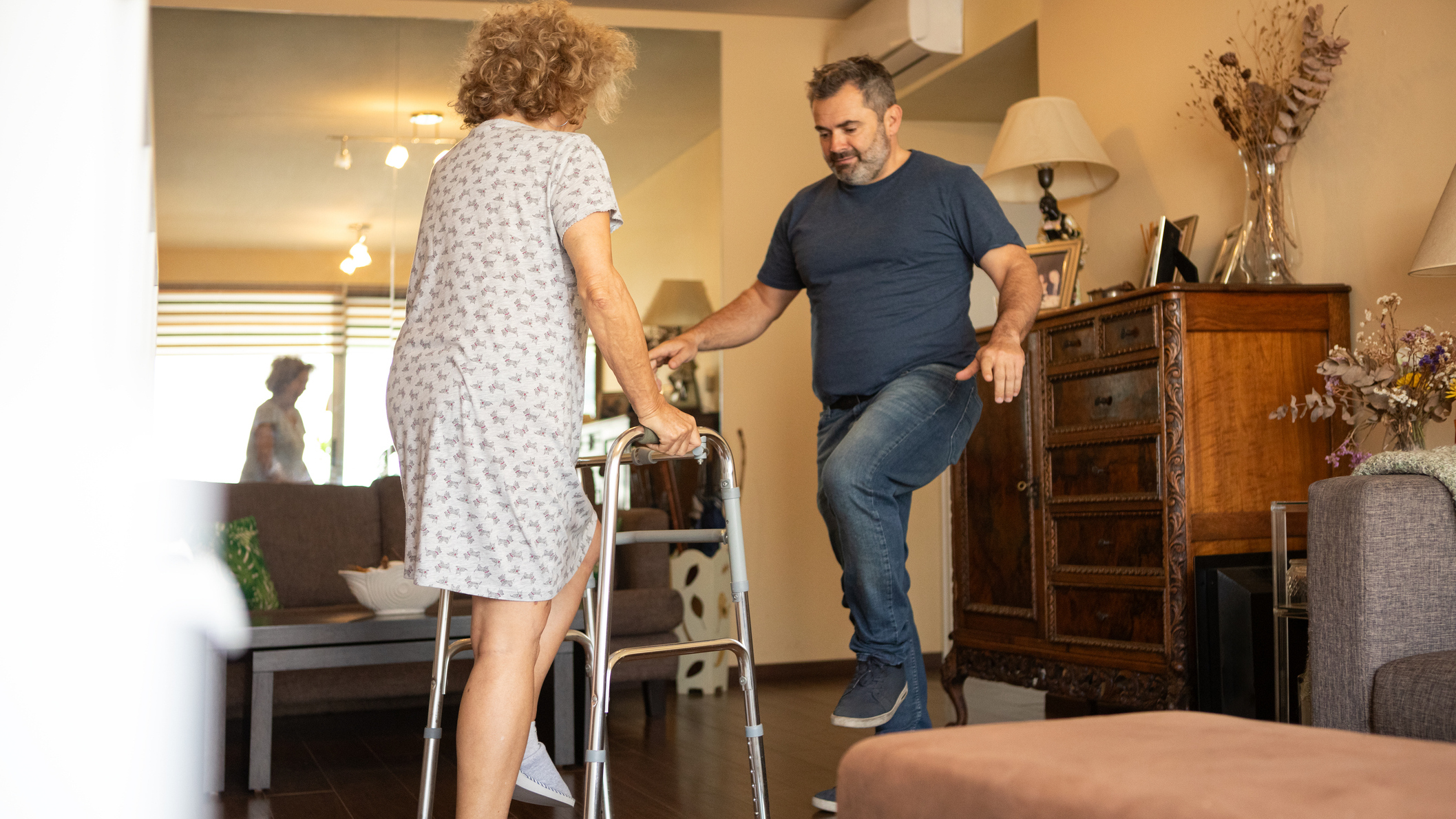
Unless you are very lucky, at some point in your life you are likely to experience a period of immobility after illness, injury, or another difficult event.
Even if you’re a regular walker hitting 10,000 steps every day, you might find yourself in the position where walking 1,000 steps suddenly seems impossible.
While it’s important to take the time your body needs to recover, there are steps you can take (pardon the pun) to increase the amount of walking you do, as long as you’ve consulted a medical professional when returning to activity after injury, illness or with new medications, to make sure you do so safely.
Earlier this year, I spoke to Milica McDowell, a doctor of physical therapy, exercise physiologist, and VP of operations for Gait Happens, and asked her how to increase your step count safely, but when your walking baseline is nothing at all, you may need an even gentler approach.
McDowell also helps to rehabilitate patients after illness and injury, so after experiencing a period of inactivity myself, I went back to her to ask how to approach walking again, and if she has any tips to make this transition easier.
Why should getting back to walking be a priority?
While in recovery, walking any distance may be beyond you, but you will likely find that your doctors and physical therapists are keen to get you back on your feet as soon as possible.
“When you have a big surgery or an injury, even just after you’ve had a baby, the first day, your doctors will take you for a walk because they know that getting you up will reduce your risk of developing blood clots,” says McDowell. “It reduces your risk of a heart attack or stroke. So on that very first day, they want you to walk for cardiovascular protection.”
After that initial day, McDowell explains that it’s vital to keep walking as much as you can to maintain musculoskeletal health, which reduces your risk of further injury. It also improves muscle condition and tone, and improves body composition, which can help with issues like balance.
If you can’t get out for a spin around the block right away, McDowell has shared five tips to increase your step count and rebuild the foundational strength you need to walk a distance.
1. Walk in place

There can be many reasons why someone can’t walk in recovery. Medications can make you feel out of breath, nauseated, or dizzy, or the injury itself might make you feel unstable. In these situations, McDowell recommends marching on the spot.
“You get some of the benefits of walking by walking in place,” she says. “Of course, we want to get you back to a place where you can walk a distance, but the first place to start is standing and taking steps or even just standing and shifting your weight.”
Even if you’re doing this in a walker or with support on each side, walking on the spot works on building up your strength and balance.
Once you can maintain this for some time, you can progress to covering distances with intervals of rest. This may be walking up and down a corridor or across a room. Your physical therapist will judge when you’re ready for this next step.
2. Walk on a treadmill
“This is often surprising to people,” says McDowell, “but you can get off at any time, you can set the pace as slow as you want, and you can hold on for support. The treadmill is also cushioned, so there’s less impact on the body.”
McDowell works with patients with neurodegenerative conditions, as well as those rehabilitating after injury, and considers the treadmill one of the safest places you can start to restore your ability to walk.
3. Walking poles
If you need a little extra support when you walk due to poor balance, dizziness or poor posture, walking poles can be a great aid.
“Walking poles are generally quite inexpensive and are phenomenal for safety,” says McDowell. “They also help you to have a better arm swing, better torso movement and they keep you in a more upright posture.”
Walking with poles is also an excellent way to add assistance as you approach walking longer distances outdoors.
4. Thinner soles
“This one is counterintuitive,” says McDowell. “Most people would think they need a highly cushioned shoe to create less impact on their joints.
“But when you wear a shoe that’s very cushioned, you can’t feel the ground as well because you have a giant layer of foam between the ground and your foot.”
For patients returning to walking after a break, McDowell wants them to feel their feet striking the ground.
“It naturally makes you walk a little softer, and you can feel the ground more,” she says, “It’s one of the best ways to make walking a little easier for those who are struggling.”
If you have balance issues, you may also find yourself struggling with a stacked shoe, because it can make you more unstable. If you’ve ever tried dancing in platform shoes, you’ll know what I mean.
5. Company
McDowell is an advocate of walking with someone. “It speeds up your recovery because it improves your mood and gives you a dopamine release,” she says. “The social aspect is really important.”
Additionally, walking with someone provides an element of safety. If your balance is off post-injury or illness, or you’re deconditioned after a break, you’re at higher risk of having a fall and reinjuring yourself. A friend or family member walking with you can encourage you to take breaks and call for help if something happens to you.
“When we’re thinking of people who have been less physically active, that’s hard on their cardiovascular health and their cardio conditioning, and their tolerance, their endurance, but they are also more likely to be socially isolated,” says McDowell. “Incorporating a social aspect to recovery and getting people to engage with their communities while rehabbing their bodies can be really healing.”







